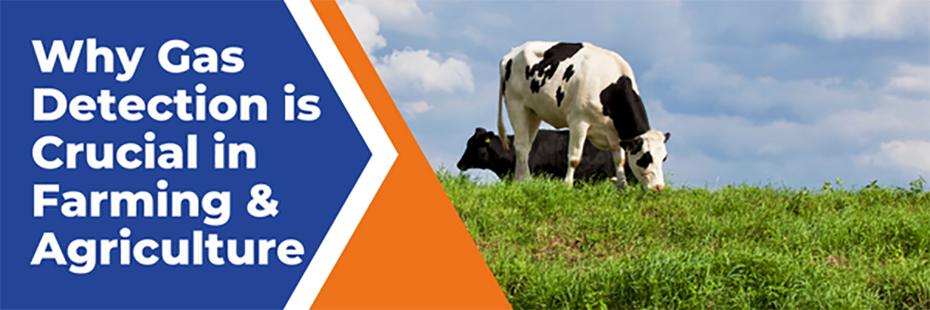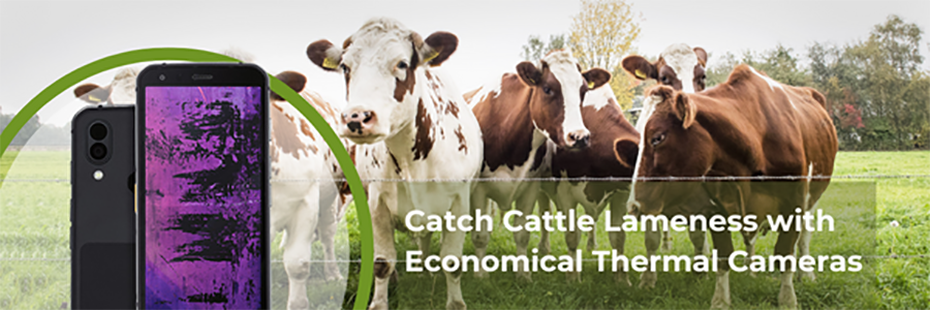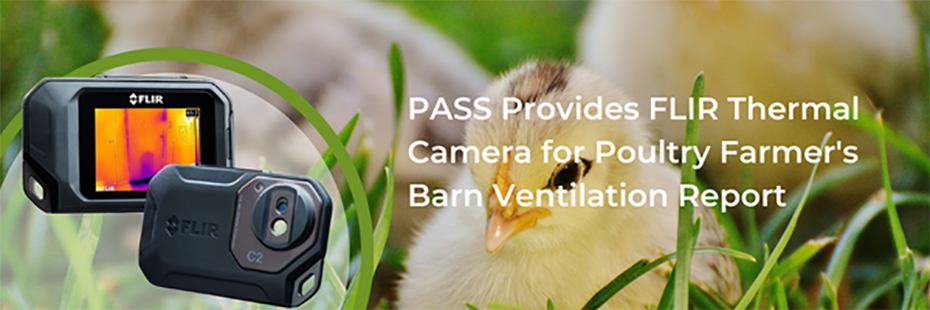 Recognising the dangers posed by toxic gases encountered in farming, Crowcon has produced a white paper specifically for the agricultural sector. Titled Why Gas Detection is Crucial in Farming & Agriculture, this paper outlines the gas hazards farmers should look out for, explains the relevant standards that need to be met, and details helpful ways to protect yourself, your staff, your stock, and, ultimately, your livelihood.
Continue reading →
Recognising the dangers posed by toxic gases encountered in farming, Crowcon has produced a white paper specifically for the agricultural sector. Titled Why Gas Detection is Crucial in Farming & Agriculture, this paper outlines the gas hazards farmers should look out for, explains the relevant standards that need to be met, and details helpful ways to protect yourself, your staff, your stock, and, ultimately, your livelihood.
Continue reading →Agriculture
-
Crowcon White Paper: Why Gas Detection is Crucial in Farming & Agriculture
 Recognising the dangers posed by toxic gases encountered in farming, Crowcon has produced a white paper specifically for the agricultural sector. Titled Why Gas Detection is Crucial in Farming & Agriculture, this paper outlines the gas hazards farmers should look out for, explains the relevant standards that need to be met, and details helpful ways to protect yourself, your staff, your stock, and, ultimately, your livelihood.
Continue reading →
Recognising the dangers posed by toxic gases encountered in farming, Crowcon has produced a white paper specifically for the agricultural sector. Titled Why Gas Detection is Crucial in Farming & Agriculture, this paper outlines the gas hazards farmers should look out for, explains the relevant standards that need to be met, and details helpful ways to protect yourself, your staff, your stock, and, ultimately, your livelihood.
Continue reading → -
Catch Cattle Lameness with Economical Thermal Cameras
 FarmingUK reports that lameness affects between 20% and 25% of cattle across the UK. Usually treated with expensive antibiotics, lameness costs the dairy industry approximately £53 million a year.[1] It has long been acknowledged that thermal imaging can provide an effective method of detecting lameness. Infections or inflammations are often the root cause of lameness and both conditions emit heat which can be picked up by a thermal imager. Catching lameness early and identifying its source means farmers can target their treatments more effectively. For example, lameness caused by an infection can be treated earlier with a shorter course of antibiotics, saving money; whereas lameness resulting from inflammation may be treated more effectively and economically with anti-inflammatories; by blocking the affected claw; or by keeping the cow on a soft surface until she has recovered. Until recently, farmers have been reluctant to invest in thermal imaging as it was thought that only high-end, very expensive models were sophisticated enough to reveal lameness. However, a recent study by Aidan Coe of the Royal Veterinary College (RVC) has discovered that less costly thermal imaging models are just as suitable for recognising lameness in cattle, potentially offering farmers significant savings while also improving the welfare of cows.
Continue reading →
FarmingUK reports that lameness affects between 20% and 25% of cattle across the UK. Usually treated with expensive antibiotics, lameness costs the dairy industry approximately £53 million a year.[1] It has long been acknowledged that thermal imaging can provide an effective method of detecting lameness. Infections or inflammations are often the root cause of lameness and both conditions emit heat which can be picked up by a thermal imager. Catching lameness early and identifying its source means farmers can target their treatments more effectively. For example, lameness caused by an infection can be treated earlier with a shorter course of antibiotics, saving money; whereas lameness resulting from inflammation may be treated more effectively and economically with anti-inflammatories; by blocking the affected claw; or by keeping the cow on a soft surface until she has recovered. Until recently, farmers have been reluctant to invest in thermal imaging as it was thought that only high-end, very expensive models were sophisticated enough to reveal lameness. However, a recent study by Aidan Coe of the Royal Veterinary College (RVC) has discovered that less costly thermal imaging models are just as suitable for recognising lameness in cattle, potentially offering farmers significant savings while also improving the welfare of cows.
Continue reading → -
PASS Provides FLIR Thermal Camera for Poultry Farmer’s Enlightening Barn Ventilation Report
 In 2016, PASS Ltd provided Devonshire-based beef and poultry farmer and recipient of Tesco’s Future Farmer Foundation Scholarship, Christina Hutchings, with a FLIR C2 Thermal Imaging Camera for her research into understanding ventilation to improve litter conditions in broiler houses. Now, that highly anticipated report, titled Where does all the water go? How a better understanding of ventilation can be used to improve litter conditions in broiler houses, has been published. In addition to detailing her in-depth investigations which Hutchings draws on to make several suggestions on improving barn ventilation, the report illustrates the critical role thermal imaging can play in farming.
Continue reading →
In 2016, PASS Ltd provided Devonshire-based beef and poultry farmer and recipient of Tesco’s Future Farmer Foundation Scholarship, Christina Hutchings, with a FLIR C2 Thermal Imaging Camera for her research into understanding ventilation to improve litter conditions in broiler houses. Now, that highly anticipated report, titled Where does all the water go? How a better understanding of ventilation can be used to improve litter conditions in broiler houses, has been published. In addition to detailing her in-depth investigations which Hutchings draws on to make several suggestions on improving barn ventilation, the report illustrates the critical role thermal imaging can play in farming.
Continue reading →
Page
Previous
Page 1 of 1
Page
Next


